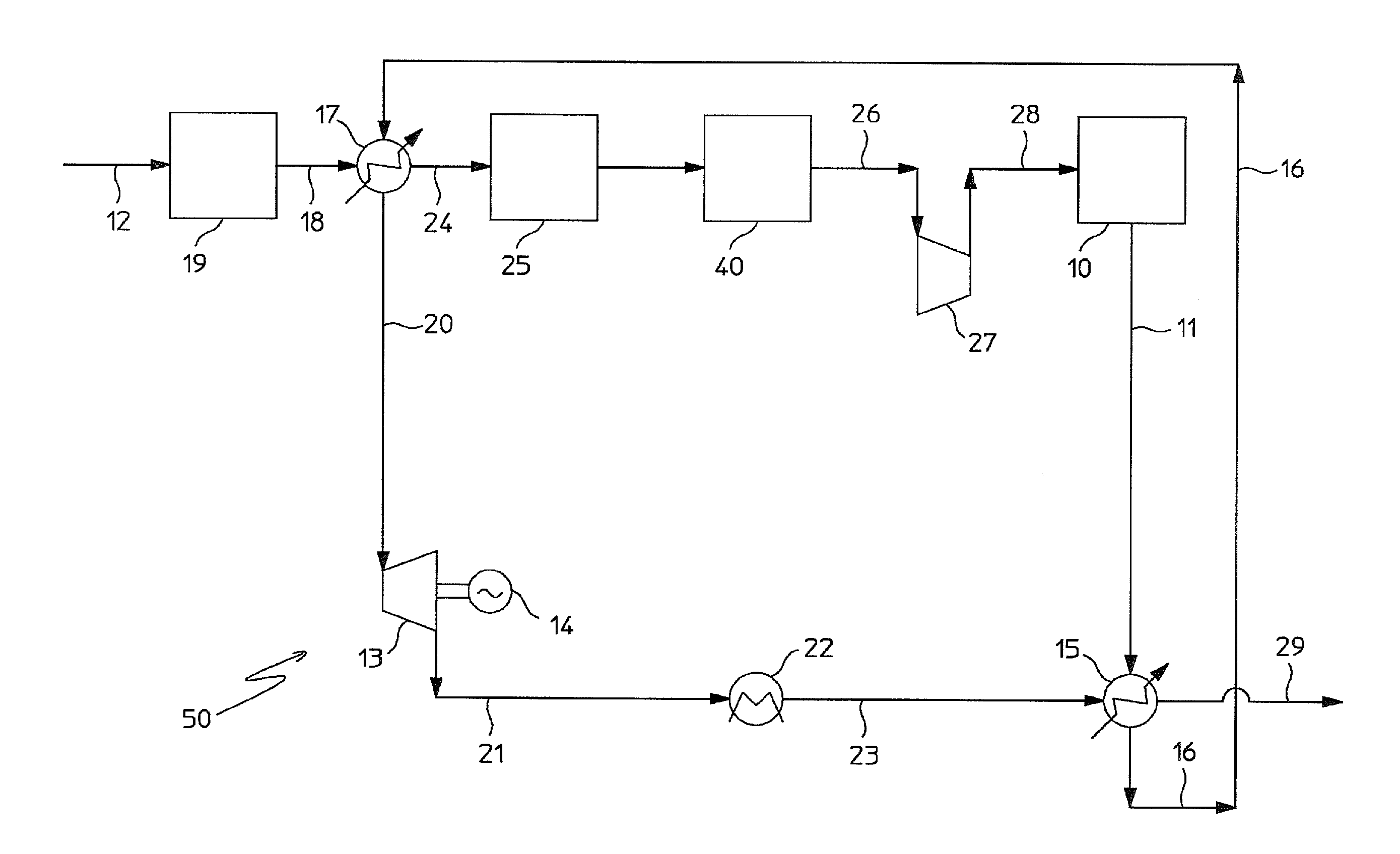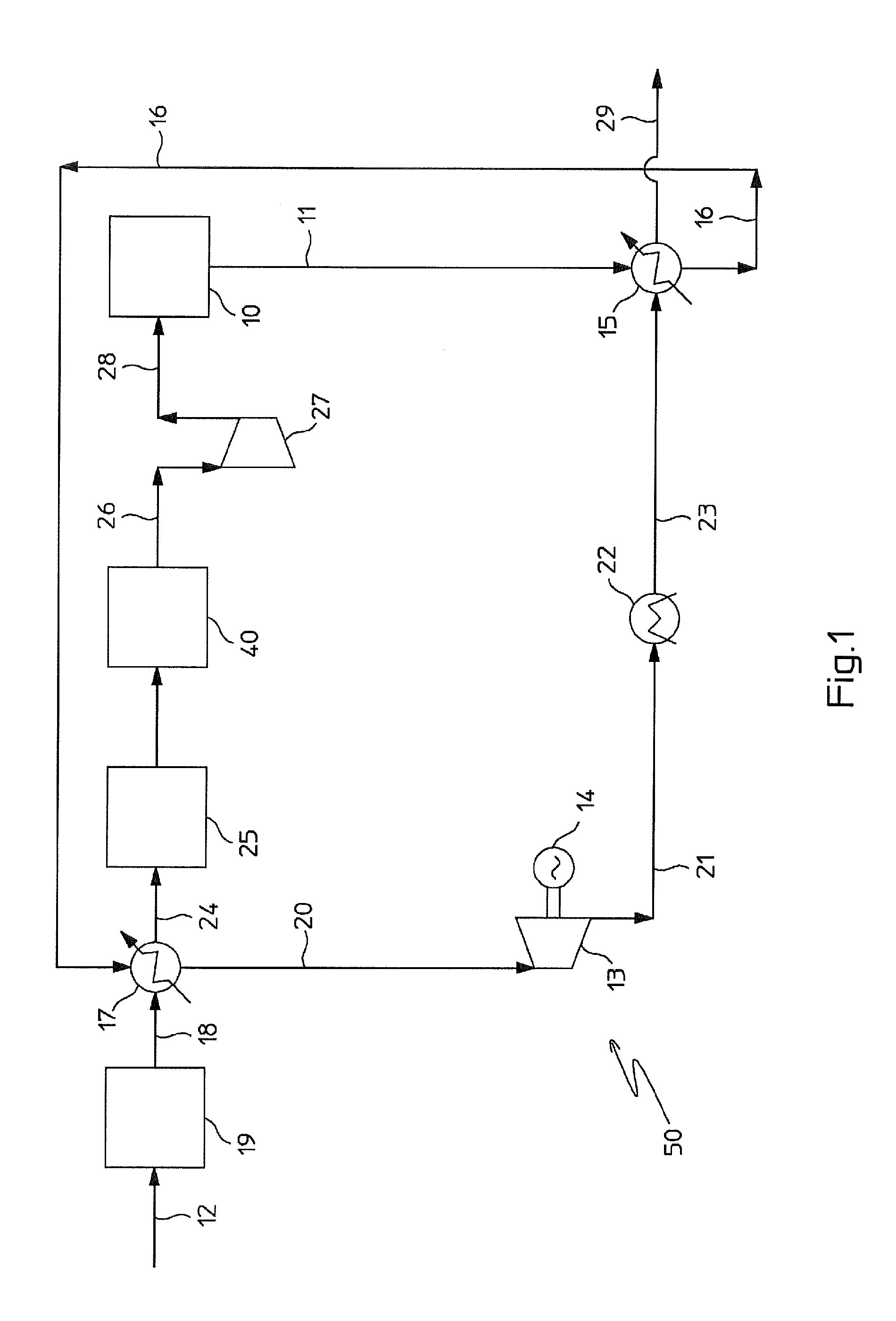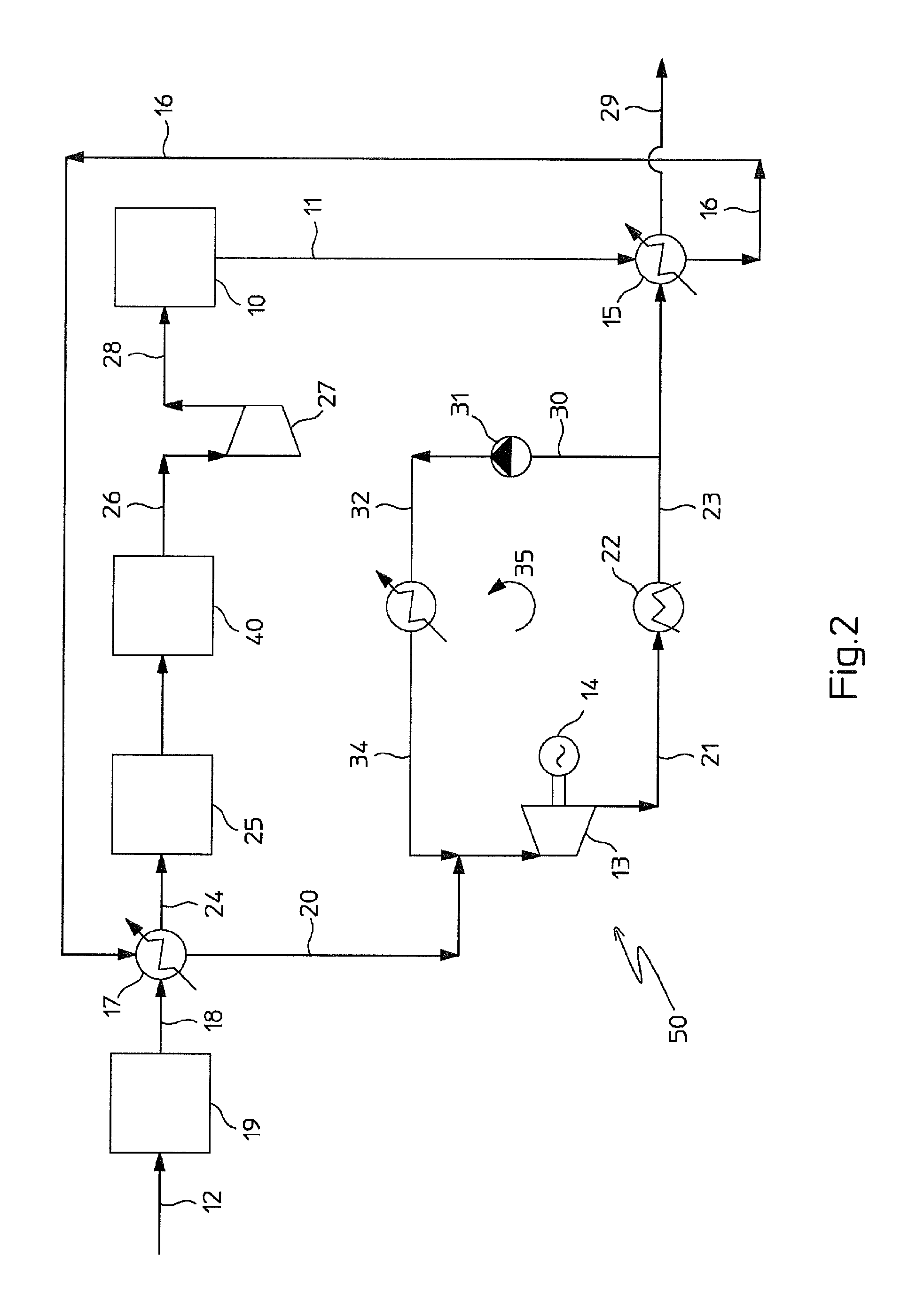Waste heat recovery in a chemical process and plant, particularly for the synthesis of ammonia
a technology of ammonia and heat recovery, which is applied in the field of waste heat recovery in a chemical process and plant, can solve the problems of inconvenient recovery of low-temperature heat, inability to achieve high-temperature heat recovery, and inability to achieve high-temperature heat recovery, and achieves significant expansion ratio, value energy output, and improved overall efficiency of the process
- Summary
- Abstract
- Description
- Claims
- Application Information
AI Technical Summary
Benefits of technology
Problems solved by technology
Method used
Image
Examples
Embodiment Construction
[0040]Referring to FIG. 1, a synthesis loop 10 delivers liquid ammonia 11 at a pressure of 80-300 bar and temperature around −30 to 10° C. The synthesis loop 10 is fed with a make-up synthesis gas which is produced in a front-end of the ammonia plant for example by steam reforming of natural gas or another suitable hydrocarbon.
[0041]The front-end may comprise a primary and a secondary reformer followed by a high-temperature and a low-temperature shift reactor. The LTS reactor is shown in FIG. 1 as 19. Downstream said LTS reactor, the make-up syngas passes in a CO2 removal unit 25; the CO2-free syngas 26 is further treated according to the needs, e.g. in a methanator, and then is fed to a main syngas compressor 27. The compressed syngas 28 is fed to the high-pressure synthesis loop 10, e.g. at a pressure of 150 bar.
[0042]According to one of embodiments of the invention, the plant of FIG. 1 comprises an energy recovering section 50 operating with ammonia as working fluid, and recoveri...
PUM
| Property | Measurement | Unit |
|---|---|---|
| temperature | aaaaa | aaaaa |
| pressure | aaaaa | aaaaa |
| temperature | aaaaa | aaaaa |
Abstract
Description
Claims
Application Information
 Login to View More
Login to View More - R&D
- Intellectual Property
- Life Sciences
- Materials
- Tech Scout
- Unparalleled Data Quality
- Higher Quality Content
- 60% Fewer Hallucinations
Browse by: Latest US Patents, China's latest patents, Technical Efficacy Thesaurus, Application Domain, Technology Topic, Popular Technical Reports.
© 2025 PatSnap. All rights reserved.Legal|Privacy policy|Modern Slavery Act Transparency Statement|Sitemap|About US| Contact US: help@patsnap.com



